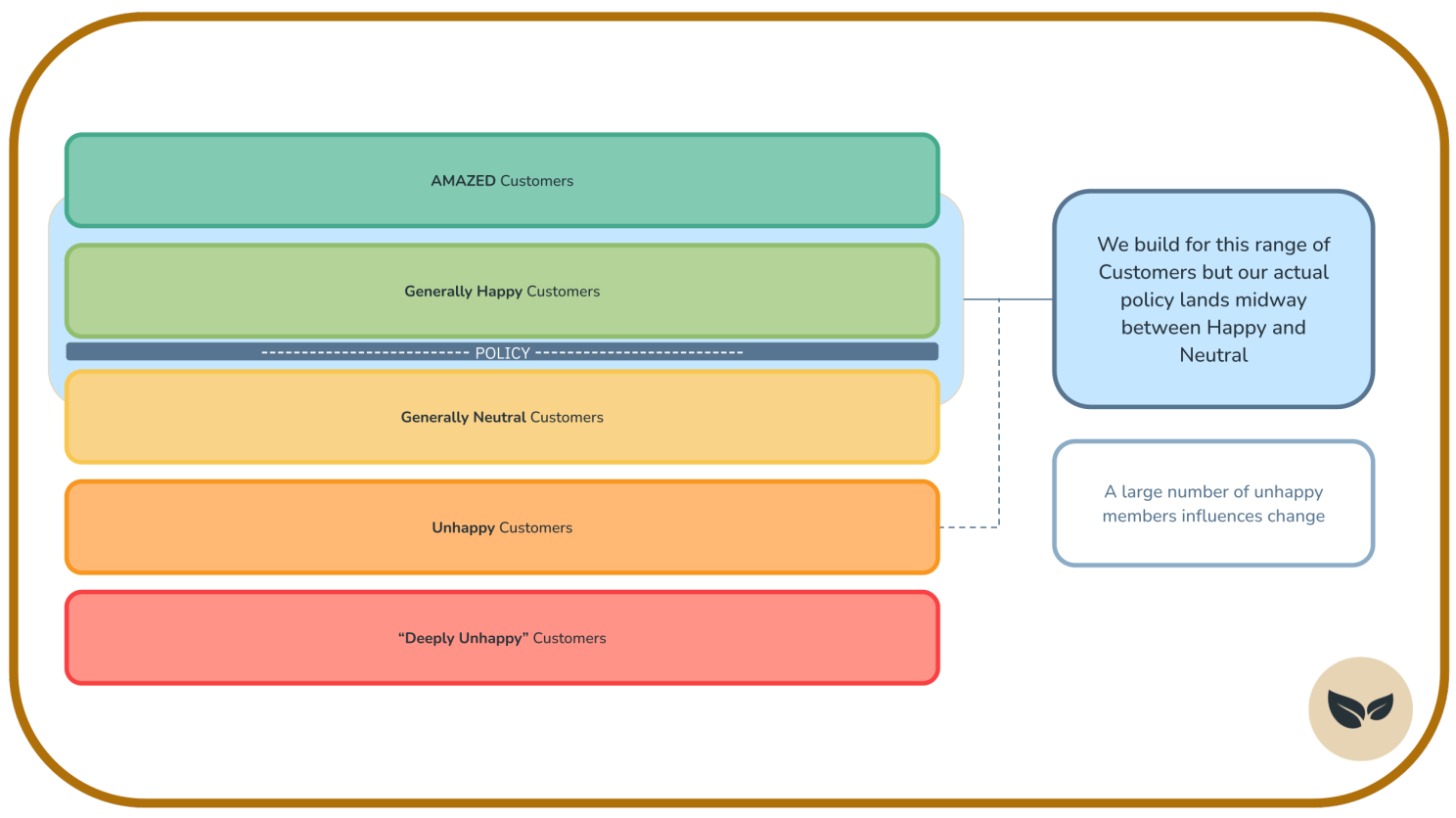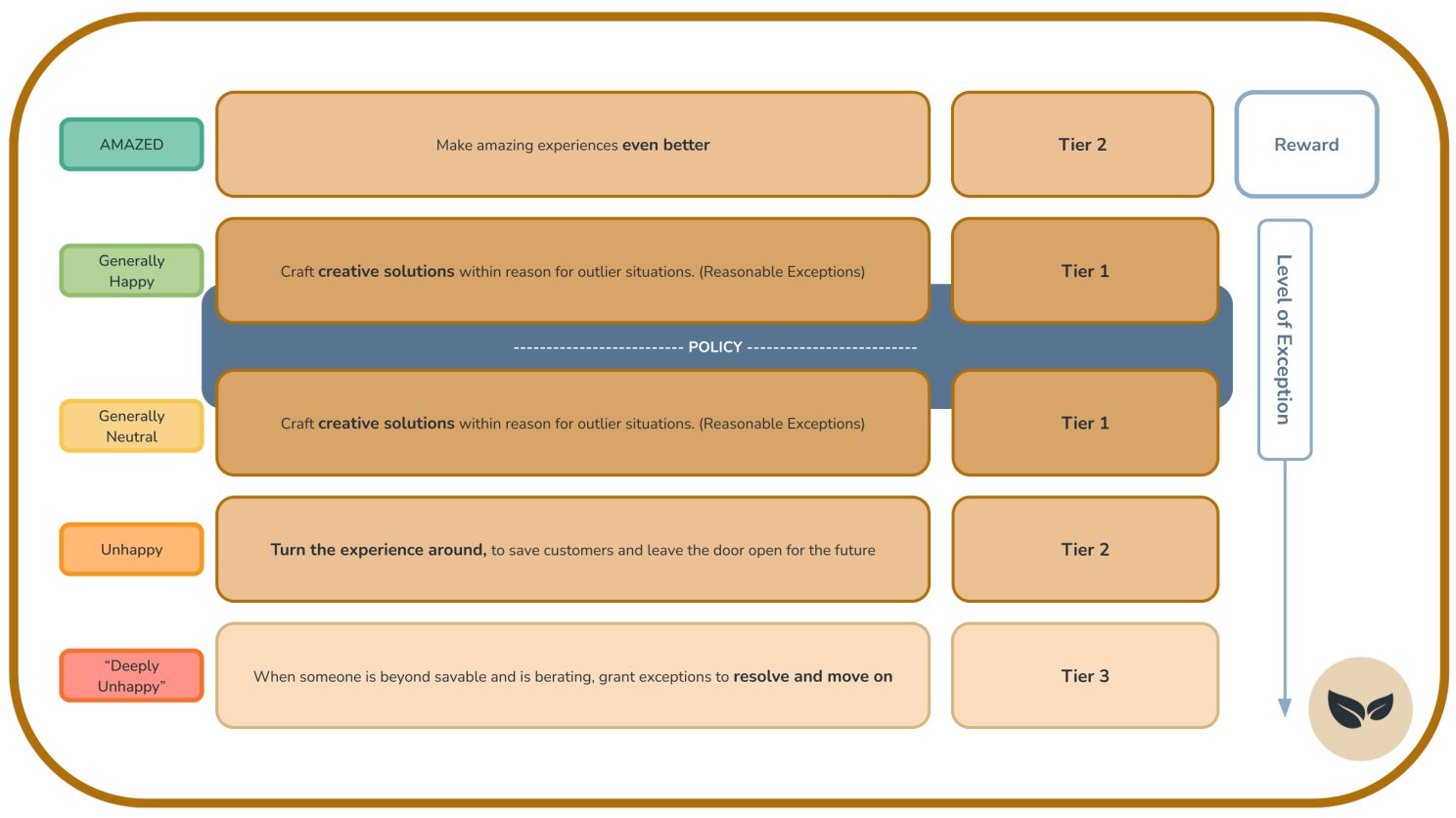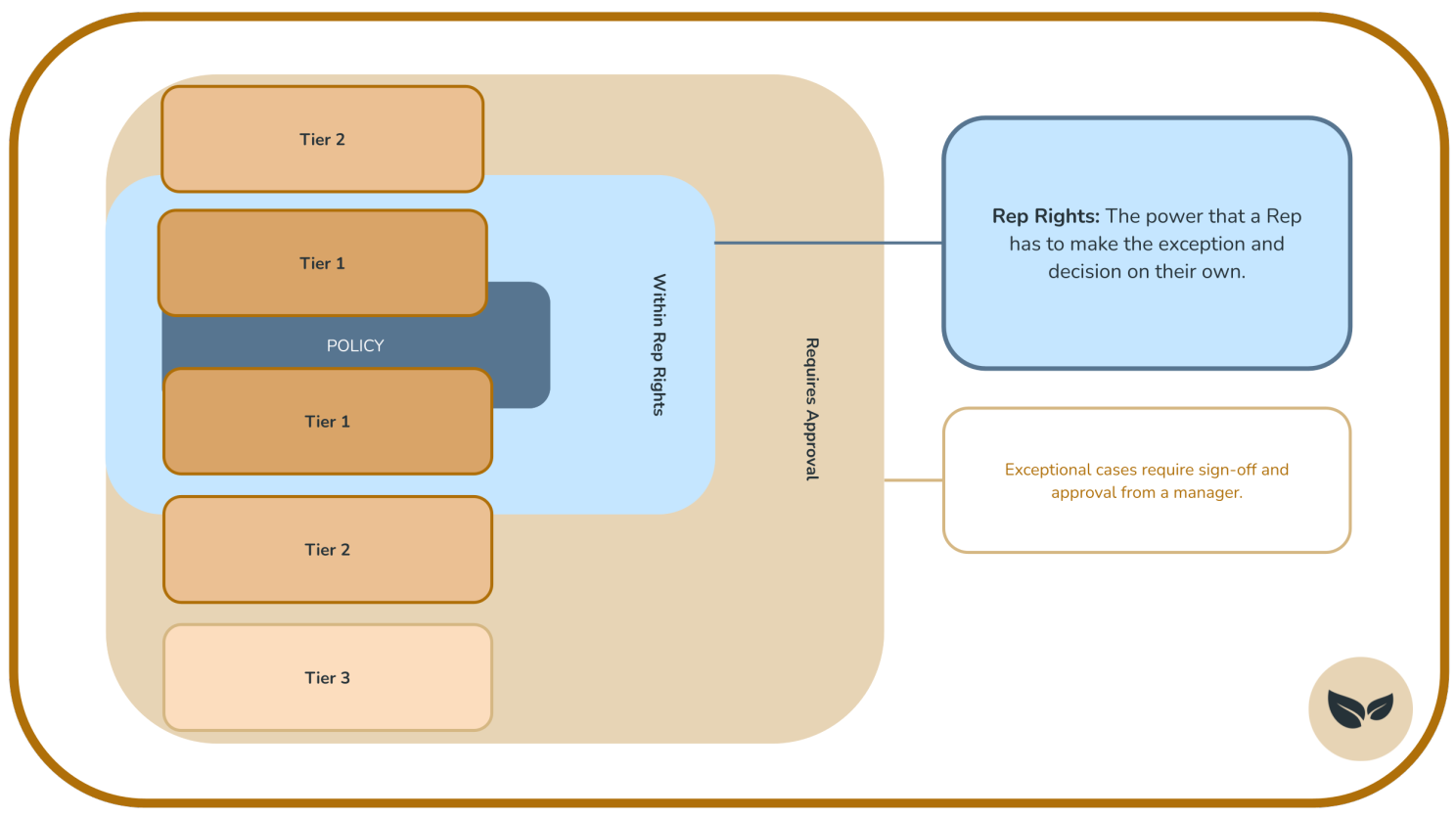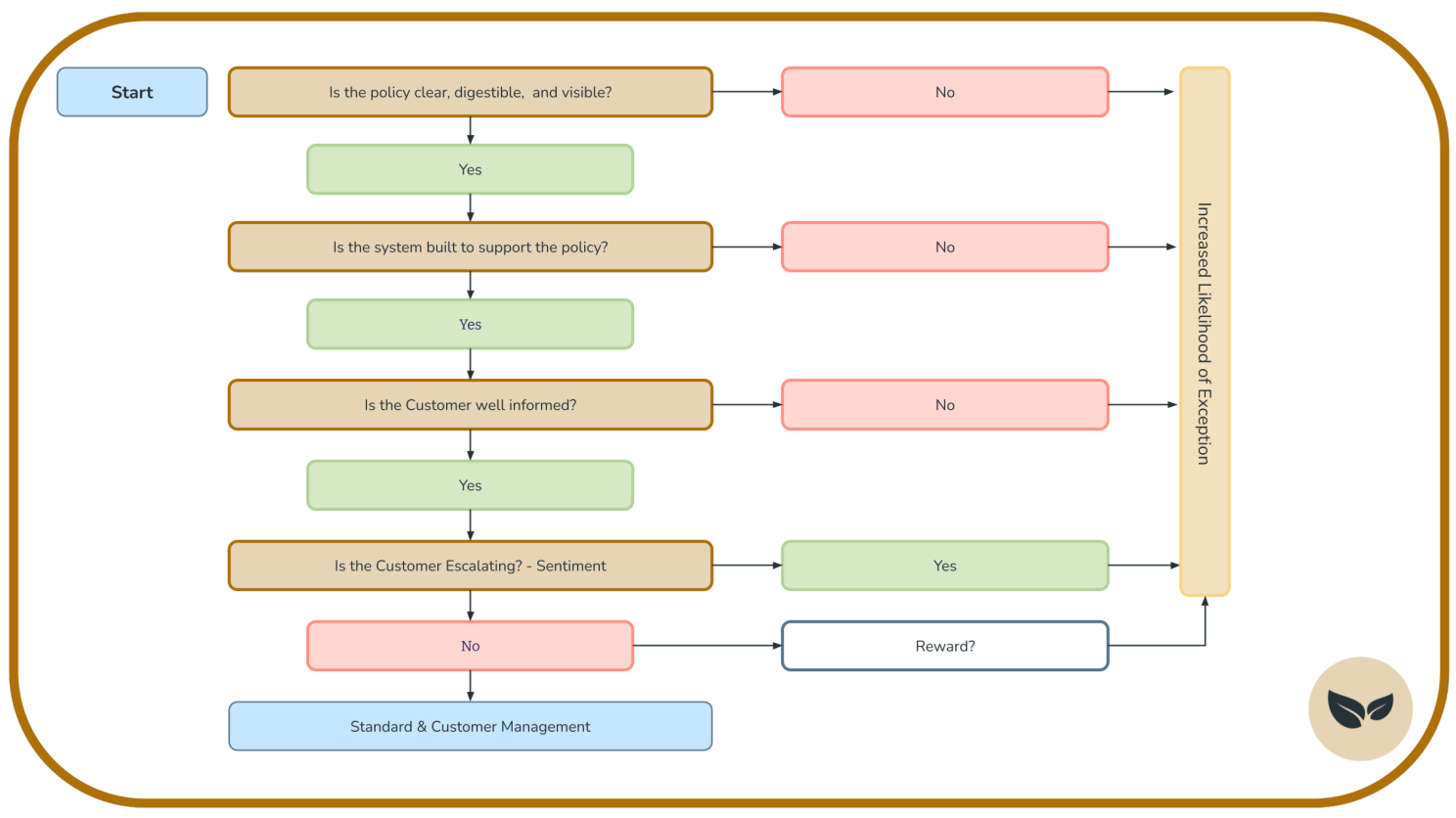As a company grows, there will have more and more scenarios in which they need to standardize our customer-facing policies and how they approach providing exceptions to those policies.
In this article, I'll go through some guiding principles for: who to create policies for, levels of exceptions and when customers meet those levels, and what decision-making power each individual has versus requiring approvals to make different exceptions.
It is our responsibility as service teams to be able to have constructive and positive communication. To be able to manage customer expectations and utilize the resources that we have to find solutions within policy and reason to de-escalate customer situations to create an amazing experience. We should not only rely on providing exceptions to create a memorable and great experience!
Who do we build policies for?
When building service policies, both sides need to be considered: our customers and our business.
We want to create the best possible experience for our customers, ensuring they have flexibility and positivity while ensuring that all customers get the same level of support from our team when needed.
For this reason, we build our policies for the largest population of our customer sentiment. We create policies to make an amazing experience, but the actual policy will land between our 'generally happy' and 'generally neutral' customer sentiments. (image below)

*Customer Sentiments will be important when providing exceptions to policies.
What are the levels of Exception?
Every customer situation is unique, and while we need to standardize policies, we still want to make room to help customers with their situation so that we can make the best experience possible. For this reason, we have varying levels of exceptions based on the customer's situation, criteria, and experience/sentiment.

Tier-One
These are creative and middle-ground solutions. Exceptions that are not very far off from the policy or a workaround/alternative solution that is still within policy.
Tier-Two
There are two types of tier-two exceptions: Rewards and Exceptions. These are clear exceptions to the policy used to turn the experience around for customers we can save and turn things around for. Or at least leave the door open for the future.
For Tier-two exceptions granted to 'Amazed' customers, these are considered rewards for being such a promoter and ambassador. These cases are much rarer in which we will grant them, but we should look for moments that matter.
Why would we give already amazed customers exceptions? They are already amazed...
To create an equal opportunity to make the experience EVEN better than it already is. (Here's a funny movie clip with an analogy for this concept) - why treat unhappy customers better than your superstar customers?
Tier-Three
This one goes against the concept above because these customers would be beyond savable, or their experience is not aligned with the usage/product guidelines. The purpose of Tier 3 exceptions is to completely and fully resolve the issue no matter what.
Once a customer escalates from the 'Unhappy' to 'Deeply Unhappy' sentiment, and we make the decision that their frustration has reached a point in which we could lose the customer, we will move to what we consider a 'one-touch solve.' This means we would do everything we can to resolve the issue in one response rather than asking for alternative options or pushing back on policy to avoid back-and-forth.
What rights do reps have?
For exceptions to policy, we want to empower reps to help customers in their unique situations without a heavy process and slow down in approvals.
For this reason, we give Reps full control over Tier-one exceptions without requesting approval.
Depending on the policy itself, they also have the power to grant Tier-Two exceptions without approval. These Tier-Two level rep-rights are given on a per-policy basis, not a blanket right.
Tiers of Exception
- Tier-One - Full rights to give exception
- Tier-Two - Mixed: Determined and given on a per-policy basis
- Tier-Three: Always requires approval

We should add and consider these tiers and rights throughout the policy creation or policy adjustment process.
When can we grant exceptions?
When we create or adjust policy, we create the tiers and levels for exception. During this time, we should also create the criteria needed to reach each level as a customer. This is easily made in the form of a decision tree that reps can use to determine which level of exception is appropriate quickly and/or if they should move to get approval.
As an overlying decision tree, we should ensure that policies are clear, simple, and visible to customers (internal or external). If the policy is not clear and understandable, we are more likely to move towards exceptions.
Here is a basic overlying decision tree to see how we should move towards considering an exception agnostic of a policy:

How do we communicate exceptions?
When providing exceptions, it is easy to set the wrong tone that these levels of exceptions will always be available to customers in every situation. This is why it is important to set the right expectation that this exception is for the specific scenario, and set the tone for what to expect in the future.
The standard format for delivering exceptions is E-E-E-E-E (Pronounced: 😬😬😬)
- Empathy - ALWAYS begin with empathy & understanding for the situation.
- Explanation - Explain the reasoning behind what caused a situation / the normal scenario.
- Exception - Provide the exception for their specific case.
- Expectation - Communicate what to expect for this exception and in the future. (What happens next)
- Empathy - End on a good note, and leave the door open. Reinforce that we understand.
How will we update exception tiers or policy in the future?
Through Policy Analysis!
Track and report on exceptions-per-problem type to see if there is a need to update , training, exceptions tiers, or ultimately the policy. This will be a consideration of customer and business needs as policies, again, should serve both sides, and ultimately be the best for the business.
In Closing
Policies are important for both customers, and the business alike, but we don't want them to get in the way of the customer experience, and cause friction to the value that a customer is trying to receive. Or the experience that the Rep is trying to create. Polices should grow with the business, and allow Reps to take ownership over creating an experience that lasts.
